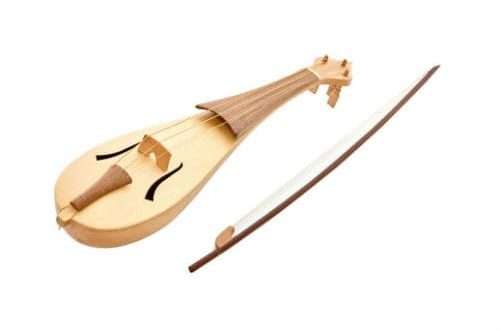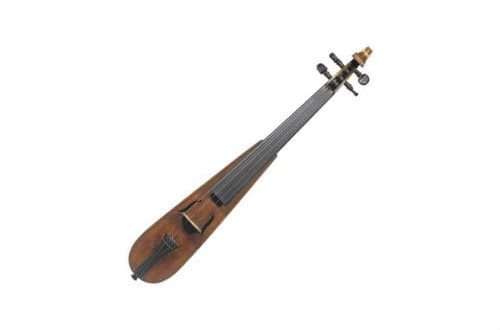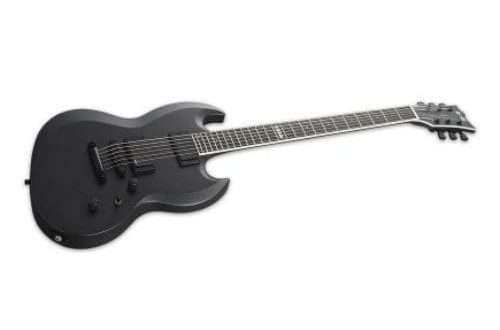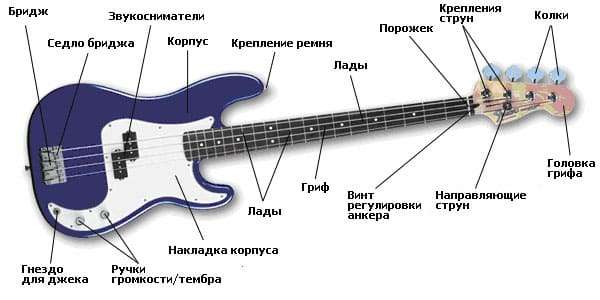
Bass guitar: what it is, how it sounds, history, types, how to choose
Contents
The electric guitar has made the greatest contribution to the development of modern popular music. The bass guitar, which appeared at about the same time, left not far from it.
What is a bass guitar
The bass guitar is a stringed plucked musical instrument. The purpose is to play in the bass range. Usually the instrument is used as a rhythm section. Some players use the bass as a lead instrument, such as the band Primus.
Bass guitar device
The structure of the bass guitar largely repeats the electric guitar. The instrument consists of a deck and neck. On the body are the bridge, saddle, regulators and pickup. The neck has frets. The strings are attached to the pegs on the head, located at the end of the neck.

There are 3 ways to attach the neck to the deck:
- bolted;
- pasted;
- through.
With a through fastening, the soundboard and neck are cut from the same tree. Bolt-on models are easier to set up.
The main differences of the design from the electric guitar are the increased size of the body and the width of the neck. Thick strings are used. The number of strings in most models is 4. The length of the scale is almost 2,5 cm longer. The standard number of frets is 19-24.
Sound range
The bass guitar has a wide range of sounds. But due to the limited number of strings, it is impossible to access the entire range of the bass guitar, so the instrument is tuned to the desired musical genre.
The standard tuning is EADG. Used in many genres, from jazz to pop and hard rock.
Dropped builds are popular. A characteristic feature of Dropped is that the sound of one of the strings is very different in tone from the rest. Example: DADG. The last string is tuned a tone lower in G, the tone of the rest does not change. In the C#-G#-C#-F# tuning, the fourth string is lowered by 1,5 tones, remaining by 0,5.
The ADGCF’s 5-string tuning uses the groove and nu metal bands. Compared to the standard tuning, the sound drops a tone lower.
Punk rock is characterized by the use of high tunings. Example: FA#-D#-G# – all strings raised half a tone.
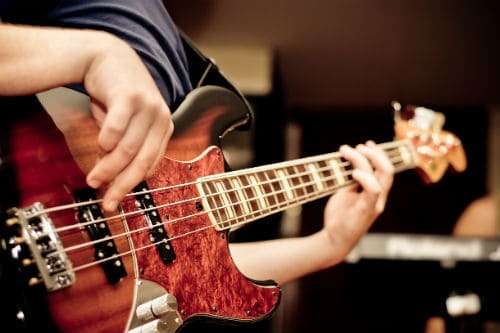
History of the bass guitar
The origin of the bass guitar is the double bass. The double bass is a massive musical instrument that has the features of a violin, viol and cello. The sound of the instrument was very low and rich, but the large size was a significant disadvantage. Difficulties with transportation, storage, and vertical use created a demand for a smaller and lighter bass instrument.
In 1912, the Gibson Company released the bass mandolin. Despite the fact that the reduced dimensions began to weigh less compared to the double bass, the invention was not widely used. By the 1930s, production of bass mandolins had ceased.
The first bass guitar in its modern form appeared in the 30s of the last century. The author of the invention was a professional craftsman Paul Tutmar from the USA. The bass guitar is made in a similar form to the electric guitar. The neck was distinguished by the presence of frets. It was supposed to hold the instrument like a regular guitar.
In the 1950s, Fender and Fullerton first mass-produced an electric bass guitar. Fender Electronics releases the Precision Bass, originally called the P-Bass. The design was distinguished by the presence of a single-coil pickup. The appearance was reminiscent of a Fender Stratocaster electric guitar.
In 1953, Monk Montgomery of Lionel Hampton’s band became the first bass player to tour with Fender’s bass. Montgomery is also believed to have made the first ever electronic bass recording on the Art Farmer Septet album.
Other pioneers of the fender instrument are Roy Johnson and Shifty Henry. Bill Black, who played with Elvis Presley, has been using Fender Precision since 1957. The novelty attracted not only former double bass players, but also ordinary guitarists. For example, Paul McCartney of The Beatles was originally a rhythm guitarist but later switched to bass. McCartney used a German Hofner 500/1 electro-acoustic bass guitar. The specific shape makes the body look like a violin.

In the 1960s, the influence of rock music skyrocketed. Many manufacturers, including Yamaha and Tisco, are starting to produce electric bass guitars. In the early 60s, the “Fender Jazz Bass” was released, originally called the “deluxe bass”. The design of the body was intended to make it easier for the player to play by allowing them to play in a seated position.
In 1961, the Fender VI six-string bass guitar was released. The build of the novelty was an octave lower than the classical one. The instrument was to the taste of Jack Bruce from the rock band “Cream”. Later he changed it to “EB-31” – a model with a compact size. The EB-31 was distinguished by the presence of a mini-humbucker on the bridge.
In the mid-70s, high-end instrument manufacturers began producing a five-string version of the bass guitar. The “B” string was tuned to a very low tone. In 1975, luthier Carl Thompson received an order for a 6-string bass guitar. The order was built as follows: B0-E1-A1-D2-G2-C-3. Later, such models began to be called “extended bass”. The extended range model has gained popularity among session bass players. The reason is that there is no need to frequently reconfigure the instrument.
Since the 80s, there have been no major changes in the bass guitar. The quality of pickups and materials improved, but the basics remained the same. The exception is experimental models, such as an acoustic bass based on an acoustic guitar.
Varieties
Types of bass guitars traditionally differ in the position of the pickups. There are the following types:
- Precision bass. The location of the pickups is near the body axis. They are installed in a checkerboard pattern, one after the other.
- Jazz bass. Pickups of this type are called singles. They are located far from each other. The sound when playing such an instrument is more dynamic and varied.
- Combo bass. The design has elements of jazz and precision bass. One row of pickups is staggered, and a single is mounted below.
- Humbucker. 2 coils act as a pickup. The coils are attached to a metal plate on the body. It has a powerful fat sound.

Additionally, there is a division into fretted and fretless variants. Fretless fretboards have no nut, when clamped, the strings touch the surface directly. This option is used in the styles of jazz fusion, funk, progressive metal. Fretless models do not belong to a specific musical scale.
How to choose a bass guitar
A beginner is recommended to start with a 4-string model. This is the most common type of instrument used in all popular genres. On a guitar with an increased number of strings, the neck and string spacing are wider. Learning to play a 5 or 6 string bass will take longer and be more difficult. It is possible to start with a six-string, if the person is sure of the chosen style of playing that requires it. The seven-string bass guitar is the choice of only experienced musicians. Also, beginners are not recommended to purchase fretless models.
Acoustic bass guitars are rare. Acoustics sounds quiet and is not applicable to a large audience. The neck is usually shorter.
A guitar luthier in a music store can help you choose the right bass. Independently, it is worth checking the instrument for the curvature of the neck. If, when you hold any fret, the string starts to rattle, the fretboard is crooked.
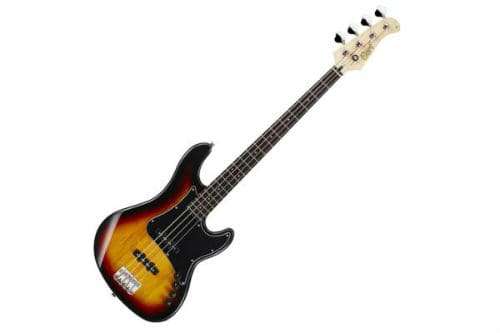
Bass guitar techniques
Musicians play the instrument sitting and standing. In the sitting position, the guitar is placed on the knee and held by the forearm of the hand. When playing while standing, the instrument is held on a strap suspended over the shoulder. Former double bassists sometimes use the bass guitar as a double bass by turning the body vertically.
Almost all acoustic and electric guitar playing techniques are used on the bass. Basic techniques: finger pinching, slapping, picking. Techniques differ in complexity, sound and scope.
The pinch is used in most genres. The sound is soft. Playing with a pick is widely used in rock and metal. The sound is sharper and louder. When slapping, the string hits the frets, creating a specific sound. Actively used in funk style.



